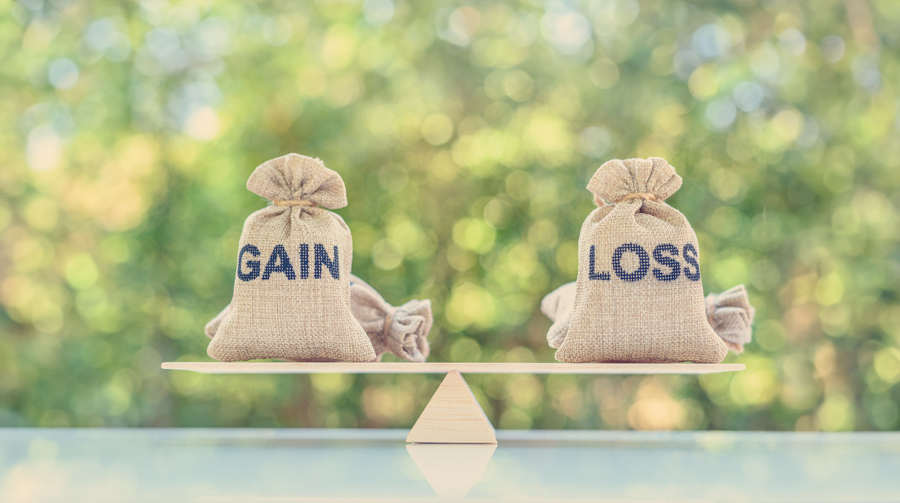
If you’ve been driving for years, chances are you’ve learned a thing or two about being safe and fuel-efficient behind the wheel.
In fact, older drivers are one of the safest groups on the road and these more cautious techniques are likely saving you money - thanks to having a smoother style and knowing when to avoid challenging conditions.
While you may have picked up a few tips over the years about saving money through more fuel-efficient driving, do you know how they actually help? And has anything changed as car technology evolves?
The good news is that just driving safely and economically is still the cheapest way to get around.
‘By adopting good eco-driving techniques, a 10% fuel saving off your weekly bill is easily achievable,’ says Greg Carter, Public Affairs Technical Specialist for the AA.
So, let’s look at the current top tips for saving money while driving, helping you understand why they work and if there are any tweaks you could make behind the wheel to save even more money – without slowing down.
Let’s begin with a tip that many of you probably already know: being gentle with the right-hand pedal. However, it can depend on where you do it.
“The biggest saver from a driving point of view is driving style: smooth and gentle acceleration and braking and better anticipation of roundabouts and red lights to prevent the vehicle from stopping altogether,” says Nick Lyes, Policy and Standards Director at IAM Roadsmart.
'Aggressive driving’ (speeding, rapid acceleration, and braking) can raise fuel consumption by up to 40%. So, ease back, and you might be surprised at what a difference it makes.
However, when driving on motorways and A-roads, studies have shown that accelerating up to higher fuel-saving speeds quickly (and safely), and smartly moving through the gears, can be the most efficient method.
Another technique worth using involves checking out the terrain ahead. “When you spot a hill coming, try to accelerate a little before you reach it, then ease off as you drive up,” says Simon Williams, Head of Policy at the RAC.
“The extra momentum should be enough to minimise additional fuel consumption."
Any additional load on the engine, such using the air conditioning unit, will add to fuel consumption — although the exact amount varies across studies.
Some put it at 5%, others about 10% - but no matter the number, it can influence fuel efficiency, particularly when the car starts and is at its hottest.
At lower speeds, simply having the windows open will help the car cool and is therefore more cost-effective than using the air-con.
At high speeds, there's no definitive answer over whether using air conditioning is more effective than having the windows down, as cars shapes vary and will cut through the air in different ways.
However, a study in 2013 tested a Toyota Corolla and Ford Explorer and found that the Toyota was less efficient at cooling the car with the windows open once it reached 80mph – but the Ford maintained greater efficiency with the windows open over the air-conditioning unit no matter the pace.
Driving isn’t always a pleasure and some days it’s tempting to put your foot down and just focus on getting there. As you may already know, there’s a sweet spot for efficiency and that hasn’t changed for most cars over the years.
"In a conventional diesel or petrol car, you can reduce your fuel consumption by 15 - 20% by reducing cruising speed from 80 to 70 mph, depending on the vehicle," says Carter.
"And a further 10 – 15% by driving at 60 mph."
Bear in mind that most manual vehicles are at peak efficiency at between 50 and 60 mph.
If you can’t drive at a constant speed, forget cruise control. It’s designed for large roads and motorways to smooth out acceleration and deceleration, says Williams.
If you use cruise control anywhere other than long, flat and low-traffic roads, you’ll need to enable and disable it far too often to gain much in the way of efficiency – plus it will make it harder to maintain control of your car.
Rolling downhill or approaching a junction with the car out of gear to save petrol used to be common practice, especially during fuel shortages. Now, it’s not recommended.
Coasting doesn’t really save any fuel, as modern cars don’t use fuel on deceleration, and you could be fined for coasting if you’re involved in a crash and not considered to be in control of your car.
“Rolling downhill out of gear actually uses more fuel, as the car will be using fuel to keep the engine running — and your control of the vehicle is reduced," says Carter.
The best practice when slowing down or driving downhill is to remain in gear but take your foot off the accelerator as early as possible.
Most modern vehicles will sense what you’re doing and cut off the fuel flow, meaning you’re using barely anything while you’re not accelerating.
.jpg?sc=max&mw=800&h=450&la=en&h=731&w=1300&hash=3FD5D2C6F00B6571E1AB7725AA7373B0)
If you only check your tyre pressures before a long journey, you might need to change your habits.
Tyres lose air at a rate of up to two pounds every month – and even more in hot weather – and, as you may know, underinflated tyres increase the resistance on the road and mean you use more fuel.
So, if you’re not doing it already, check your pressures every month. While exact numbers on the effectiveness of correctly inflated tyres vary, The Energy Saving Trust suggested in 2014 that tyres underinflated by a quarter less than the recommended amount can increase fuel consumption by 2%.
Remember, too, that if you’re carrying additional weight, such as a car full of passengers and holiday luggage, the right tyre pressure might be different to normal. Check your car’s handbook for the correct pressure.
We’re all guilty of nipping out in the motor as and when, but if you can make one bigger round trip rather than lots of small, short trips, you’ll improve your car’s fuel efficiency.
“Once the engine is warm, it will operate at its most efficient,” says Lyes. “Several cold starts will increase fuel consumption, even though the total mileage could be the same.”
You’ve probably already used a route planner multiple times, but some mapping software can now show the most fuel-efficient route – with fewer hills, less traffic, and more constant speeds – to make your round trip even more wallet-friendly.
For instance, if you’re using Google Maps on your smartphone, just look for the route with a little green leaf to show you’re on the most efficient path.
With super unleaded fuel costing around 13p more than normal petrol at the time of writing, and premium diesel around 17p more than the standard version, is it worth spending extra?
"If you have a high-performance car, a premium fuel may improve driving performance and fuel efficiency and may even be recommended by the manufacturer," says Simon Williams.
"But for the everyday motorist, it’s not really going to make a difference to your vehicle’s performance, but it will obviously cost you significantly more money."
If you do like the sound of the engine-cleaning capability of premium fuel, experts suggest that just putting it in a few times a year will be enough to get the same dirt-stripping effect, especially for diesel cars.
It’s also important to keep an eye on the cheapest prices and use stations with lower costs. However, it can quickly become cost-inefficient to drive further to get cheaper petrol, so plan your journey to get cheaper prices on the way.
That might sound obvious, but it’s now easier than ever to scope out lower prices. Petrol cost comparison sites make it simple to spot the cheapest forecourts, such as from The AA or RAC, or you can download apps from places such as PetrolPrices.
One common tip for better fuel-efficient driving is removing any unnecessary weight, especially from a heavily-filled boot or roof box. But do you know what effect that weight has on your wallet?
As a rough guide, for every additional 45kg your car carries you’re reducing fuel economy by 2%, according to the RAC Foundation.
For a 100-mile trip, this won’t perhaps add up to much – around £1 if you’re carrying an excess 90kg – but if you can take that weight out and store it elsewhere, you can save a fair bit over the course of a year.
Similarly, if you tend to leave the rack, roof box and bike carrier in situ when you’re not using them, this extra load creates more drag and so increases fuel usage.
In fact, at 75mph an empty roof rack adds 16% to fuel consumption, and a roof box can add over a third, according to figures suggested by Energy Saving Trust.
That means by stripping off your roof box, you’ll save just under £10 on an average motorway-based 100-mile trip... and those pounds will quickly add up.

.jpg?la=en&h=354&w=616&hash=A10D7327E975A53D59C8D6B3C7A0ECBA)

Find out what changes to the rates and allowances for capital gains tax could mean for you

If you’ve saved hard or had a windfall, here’s how you can help others


